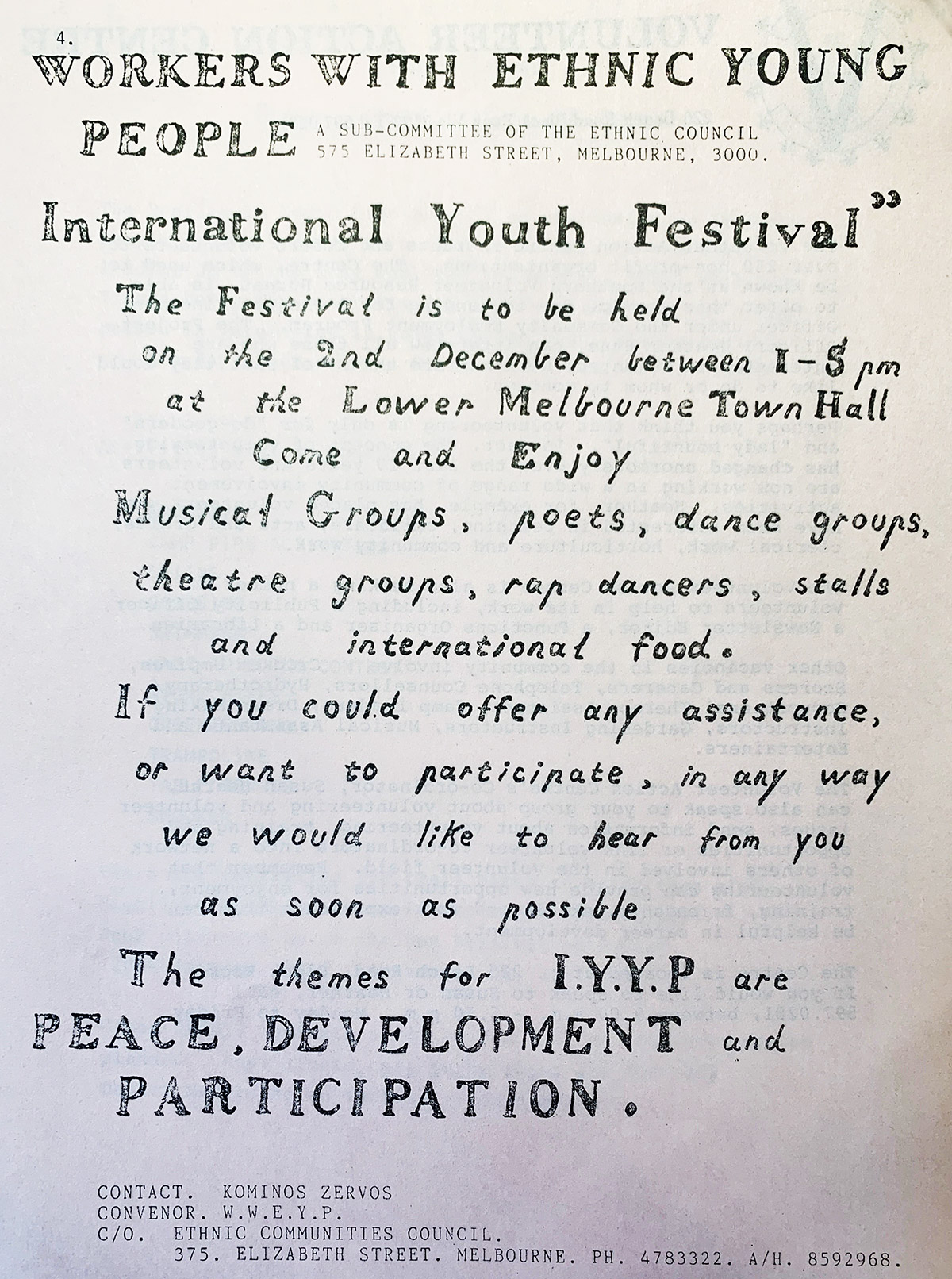In 1983 a group of workers with young people formed a network with the support of the Ethnic Communities Council of Victoria.
Following the gradual adoption of multiculturalism in Australia in the 1970s, the 1980s was an era of significant development in the delivery of services that were seeking to reflect and respond to the multicultural communities they served. At this time, greater numbers of people who had themselves migrated, or whose parents had migrated, from non-English speaking countries were graduating with tertiary qualifications and joining community service workforces, bringing with them diverse, culturally informed perspectives and insights into the experience of migration. While a number of community services, including ethno-specific organisations, had staff dedicated to working with young people, it was clear to some workers that the needs of culturally diverse young people were not being met by existing services or practice models. All too often, discrimination within services and the community broadly meant that young people of migrant and refugee background were facing barriers to realising their rights and potential. These workers were also deeply concerned with the inadequacy of support for refugee young people, who, in the 1980s were arriving in Australia in record numbers from countries such as Vietnam, Cambodia and Chile.1 Victoria and New South Wales were receiving the vast majority of these refugees.2
 WWEYP International Youth Festival Flyer, 1984
WWEYP International Youth Festival Flyer, 1984
From 1983, an informal professional network of individuals working with migrant and refugee young people began meeting regularly at the Ethnic Communities Council of Victoria (ECCV), with the support of the Council and the Victorian Association of Youth in Communities. Offering much needed insight into how services needed to change to better meet the needs of migrant and refugee young people, WWEYP became an active member of the peak body for the youth sector, the Youth Affairs Council of Victoria (YACVic), and WWEYP member Carmel Guerra was nominated to the Youth Policy Development Council advising the Victorian Minister for Youth, Sport and Recreation.3 They also attracted funding from the Commonwealth to support evaluations of the services to young people that they offered, and some short term State Government project funding to undertake some policy and sector development work.4
1 Australian Bureau of Statistics (1998) ‘Population Growth: Changes in immigration intake’ in 4102.0 – Australian Social Trends, 1998. Accessed: 28/11/23 https://www.abs.gov.au/ausstats/ABS@.nsf/2f762f95845417aeca25706c00834efa/60b63fa45ebb4b61ca2570ec0018e4f6!OpenDocument
2 Australian Bureau of Statistics, ‘Population Growth: Changes in immigration intake’ in 4102.0 – Australian Social Trends, 1998.
3 “Services the Government Provides for Young People in Victoria: Youth Policy Development Council,” Resource, the Journal of the Victorian Association of Youth Clubs 10, no. 11 (December 1984); Heinz, B. (2009) Many Hopes, One Dream: The story of the Ethnic Communities Council of Victoria. Australian Scholarly Publishing, North Melbourne. pp. 56-7 & EYIN Historical Overview 1994 (author unknown), Centre for Multicultural Youth archive.
4 Ethnic Youth Issues Network (1999) Faces of Young Australia: Ethnic Youth Issues Network Celebrates 10 years of service. Hinz, B. (2009) Many Hopes, One Dream: The story of the Ethnic Communities Council of Victoria. Australian Scholarly Publishing, Kew. pp. 56-7.
